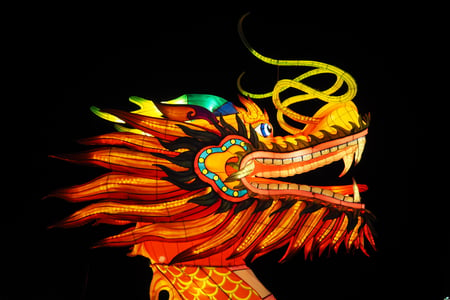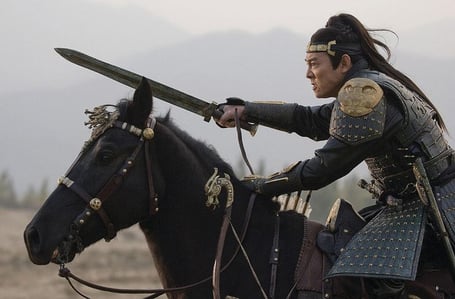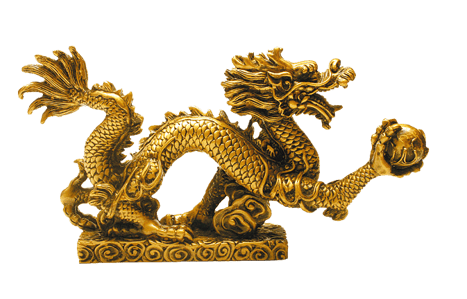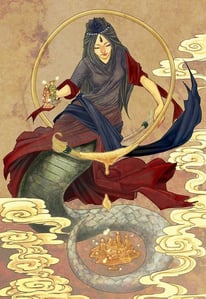Chinese New Year is right around the corner and when it swoops in for a landing, it'll be shaped like a Dragon... A Wood Dragon, to be precise.
If you were lucky enough to be born in ’52, ’64, ’76, 88, ’00, or 2012, then you’re a Dragon and perceived to be ‘confident, intelligent and enthusiastic.’

If you want to understand what Chinese New Year is and how it differs from the New Year celebrated by Western culture, you can read all about it here.
What does the Dragon represent?
Not to be confused with their younger, Western counterparts Chinese dragons, or Lóng, are not considered terrifying monsters that breathe fire and terrorise villages. In ancient Asian traditions, the dragon was a symbol of great power, good luck, and strength, making it the most popular of the twelve zodiac signs.

📷 IMDB The Mummy: Tomb of the Dragon Emperor
Many Emperors and members of Imperial families used dragons to denote their status. In ancient Chinese culture, people believed that the majestic and magical beasts possessed innate qualities of leadership, so it's no surprise that royalty wanted to be associated with them.
What are the origins of the Dragon?
The earliest known depictions of dragons in ancient China date back to the neolithic Xinglongwa culture (6200-5400 BC). For context, that's approximately 7000-8000 years ago, pre-dating the Great Pyramids of Giza in Egypt by around 3000 years.
The first traditional images of the ‘Lóng’ appeared in the Shang dynasty (1766-1122 BC). Over time the depictions evolved to include different colours to represent different aspects of nature and eventually, the Yellow Dragon represented the Yellow Emperor (the first Emperor of China) of the Yellow River.

📷 Shang Dynasty Bronze Dragon via HiClipart
Images of the traditional dragon generally include a composition of existing animals: the scales of a fish, the tail of a serpent, the belly of a clam, the head of a camel, the claws of an eagle, the paws of a tiger, the ears of a cow, and the eyes of a demon. According to the historyskills.com,
"This amalgamation of features from various animals suggests that the
dragon was seen as a symbol of the natural world's totality and power."
The idea of the dragon spread across Asia and Europe with migration and trade where it took on new meanings, morphing and twisting into the legendary fire-breathing, lizard-like, winged monsters that burned settlements, hoarded gold, and were slain by knights during the Middle Ages... and Middle Earth. We bet you never really gave that connection much thought, did you?
🎥 The Hobbit: The Desolation of Smaug
Dragons in Chinese Mythology
Where the concept of a flying serpent initially came from is a bit of a mystery as much of human history pre-dates written records, but the basis of folklore is usually rooted in factual events. Ancient cultures all around the world - Greeks, Myans, Incans, Indians, Native Americans, Aboriginal Australians, Sumerians, Mesopotamians, Egyptians, the list goes on - all depict flying and land-based serpents as Gods, companions of the Gods, or modes of transport for the Gods. Chinese culture, much older than the others, is no different.
Mother goddess Nüwa, with the head of a woman and the body of a snake, is credited with creating humanity from clay and mud, and restoring the Pillars of Heaven after they were damaged by the losing side of an epic battle between the gods.

📷 Mother Goddess Nuwa
The legend of the Yellow Emperor tells that upon his death he transformed into a dragon and flew to the heavens. This story lends credence to the association between imperial power and the mythical beast.
The Dragon King was also believed to control the weather and was the divine ruler of the oceans. He was often prayed to for rain in times of drought. He was also linked in legend to the Monkey King and the White Snake.
Dragons in modern popular culture
There's no shortage of TV shows and movies that feature dragon gods available for your viewing pleasure. The most recognisable to the mass audiences would be Marvel's Shang-Chi and the Legend of the Ten Rings, starring some very notable names like Oscar-winner Michelle Yeoh, martial arts superstar Tony Leung, and rapper/comedian Awkwafina.
🎥Shang-Chi and the Legend of the Ten Rings
The dragon is referred to as ‘The Great Protector’ by the ancient society characters in the film, so this should give you a good indication of its status within their belief system.
If you like to watch foreign TV, then you won't regret indulging in shows such as Miss the Dragon, The Longest Promise, Till The End of the Moon, and more.
You may not realise it at first glance, but Falkor from The Neverending Story was also a dragon. Yes, the flying gentle giant we all wanted for ourselves as kids was a dragon - a Luck Dragon. He was more reflective of the Xinglongwa depiction.
Now, when you see the large dragon effigies sweeping through the streets during the Chinese New Year celebrations, you'll know why they are so important to those celebrating the holiday.